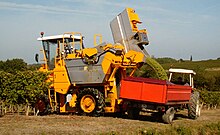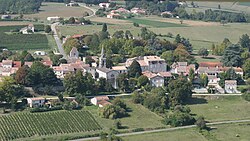|
Côtes de Duras
Côtes de Duras is an Appellation d'Origine Contrôlée (AOC) for red and white wines in South West France. Côtes de Duras is located in the department of Lot-et-Garonne, and is located immediately adjacent to the Bordeaux wine region, which is restricted to the Gironde department, as an extension of Bordeaux immediately to the east of the departmental border. History Wine from the area around Duras have been famous since the time of the French monarch, Francis I. After the Edict of Nantes had been revoked and local French Protestants had moved to the Low Countries, wine exports to ports around the North Sea suddenly expanded. Later this area became part of the Haut Pays Bordelais or upper Bordeaux wine country, and its exports were handled by merchants based in the Chartrons district of the city of Bordeaux, just like the wines produced closer to the city of Bordeaux itself. This was a golden age, which ended when use of the Bordeaux appellation was restricted to wines from the Gironde department in the 1930s. This appellation was granted on 16 February 1937. Climate and geography The Côtes de Duras oceanic climate is identical to that of the Bordeaux region, except that it experiences slightly more extreme temperatures because of its distance from the ocean. This wine-growing area is situated in the north-west of Lot-et-Garonne where it borders the Gironde and Dordogne departments. Wine from this appellation grows on tertiary fluvio-lacustrine sediments that occur in three different forms:
Wine-growing area This terroir lies on the right bank of the Dropt and is divided into two by the Dourdèze valley. This wine-growing area is spread across 15 communes: Auriac-sur-Dropt, Baleyssagues, Duras, Esclottes, Loubes-Bernac, Moustier, Pardaillan, Saint-Astier, Sainte-Colombe-de-Duras, Saint-Jean-de-Duras, Saint-Sernin, La Sauvetat-du-Dropt, Savignac-de-Duras, Soumensac and Villeneuve-de-Duras. Organizational structuresAccording to 2005 data provided by the INAO (Institut National des Appellations d'Origine), 121,948 hectolitres were produced from 2,038 hectares, and production was spread across 86 private cellars and 3 cooperative cellars and wine-merchants. Grape varieties and wines
ReferencesExternal links |
||||||||||||
